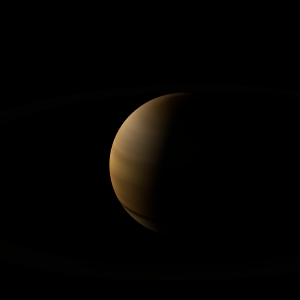|
|
Space Astro
|
Info for exoplanet "Lyuan'chyang"
| Scientific (actual) data |
|---|
| Name | NLTT 41135 b |
| Planet status | Confirmed |
| Planet mass | 33.7 |
| Mass sini | 33.7 |
| Radius | 1.13 |
| Orbital period | 2.88948 |
| Semi major axis | 0.024 |
| Inclination | 87.42 |
| Discovered | 2010 |
| Updated | 2024-08-06 |
| Tzero tr | 2455000 |
| K | 13189 |
| Publication | Published in a refereed paper |
| Detection type | Primary Transit |
| Mass measurement type | Radial Velocity |
| Radius measurement type | Primary Transit |
| Star name | NLTT 41135 |
| Right ascension | 236.52° |
| Declination | 4.69° |
| Mag v | 18 |
| Star distance | 22.7 |
| Star metallicity | 0 |
| Star mass | 0.188 |
| Star radius | 0.21 |
| Star sp type | M5V |
| Star temperature | 3230 |
| Wikipedia article | NLTT 41135 b |
Back
| |
| Fictional info (?) |
|---|
| Suggested name | Lyuan'chyang |
| Planet type | Huge hot gas giant |
| It was the one of the first exoplanets visited by a spacecraft, and one of the first to be successfully landed on.
The outer atmosphere is visibly segregated into several bands at different latitudes, resulting in turbulence and storms along their interacting boundaries.
The surface of this arid planet is inhabitated by unpredictable yet primitive herbivores known as "Ryong". They spend their life close to volcanos while consuming smaller pray. They are related to Zopyou'jang but with wings and vary in size from 50 to 80 cm. The Ryong are known to live at temperatures from -50 to 20°C but are killed by the high radiation level. |
| Estimated population | 2.4 |
| Atmosphere | Methane | 44% |
| Water | 27% |
| Carbon dioxide | 26% |
| Oxygen | 2.9% |
| Atmospheric pressure | 13 bar |
 |
| No known satellites |
| Google search for Lyuan'chyang |
|
Website by Joachim Michaelis
|
|
|
|